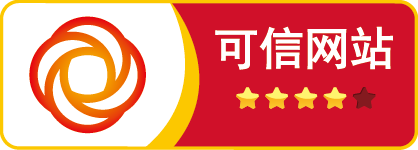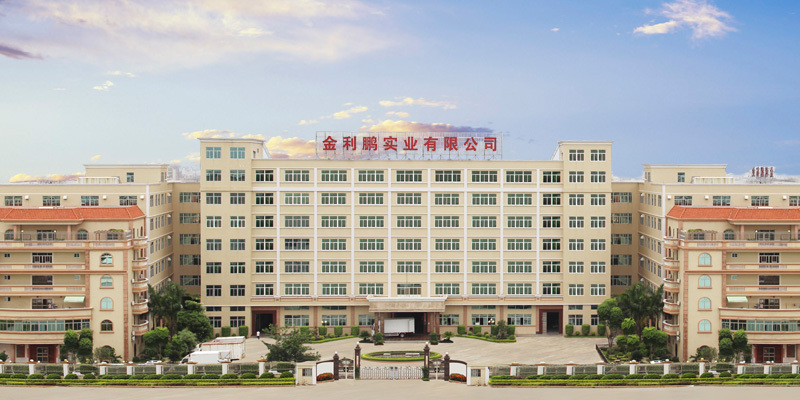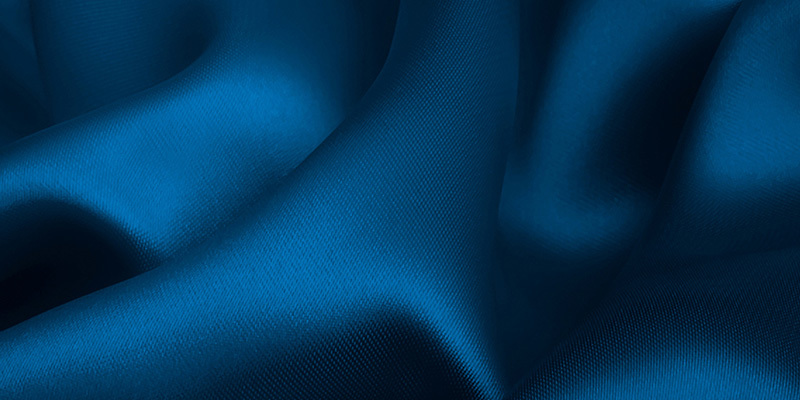Category
Industry News
05-26
2022
Knitting industry is an important part of textile industry
According to different process characteristics, knitting production is divided into two categories: weft knitting and warp knitting. In weft knitting production, after the raw material has been wound, the package yarn can be directly put on the machine for production. Each yarn is sequentially placed on each knitting needle of a weft knitting machine in the weft direction to form a weft knitted fabric. In warp knitting production, the raw materials are wound and warped, and the yarns are arranged in parallel and wound into warp beams, which are then produced on the machine. The yarns are unwound from the warp beam, and each yarn is placed on one or at most two knitting needles of a warp knitting machine in the longitudinal direction to form a warp knitted fabric. There is also a method of combining weft knitting and warp knitting on some knitting machines. At this time, two sets of yarns are arranged on the knitting machine, one set is covered by the warp knitting method, and the other set is covered by the weft knitting method. The loops formed by the same yarn are arranged in the weft direction in weft knitted knitted fabrics and in the warp direction in warp knitted knitted fabrics. In 2010, China's macro-economy continued to pick up and improve. With the gradual stabilization of domestic employment, market confidence improved, and residents' living standards continued to improve, the market demand for clothing and consumer goods will maintain a steady growth. At the same time, the national plan to expand domestic demand continues to advance. In order to further improve people's livelihood, the state's investment in agriculture, rural areas, affordable housing construction, and promotion of automobile consumption will also continue to increase, which provides a broader scope for home textiles and industrial textiles. market space. The knitting industry is an important part of the textile industry. In 2008, China's knitted garments accounted for more than 50% of all garments, which is getting closer to 65% in developed countries. From January to December 2010, the knitting industry produced a total of 16.417 billion pieces of knitted garments, a year-on-year increase of 18.38%. From 2005 to 2010, the industry market sales revenue continued to increase, from 200.892 billion yuan in 2005 to 409.737 billion yuan in 2010, with a year-on-year growth rate of between 8% and 52%, the highest being 51.14%, and the lowest being 8.63%. The increase is relatively large, with a year-on-year increase of 23.34% in 2010. With the increase in the income of urban and rural residents, consumers' higher requirements for clothing and clothing taste, in the context of the country's expansion of domestic demand and encouragement of consumption, the accelerated process of population urbanization and technology-driven development will bring opportunities for the development of the knitting industry, making domestic sales more important for knitting. The pulling role of industry growth will become increasingly important. In addition, the further development of the ASEAN market and the cultivation of new international markets will promote the development of the knitting industry in 2011. As the knitting industry is highly dependent on labor, China's low wage costs have an obvious advantage, coupled with China's huge market share and mature technology support, the future of the global knitting industry will be mostly concentrated in China. With the continuous introduction of advanced technology, the knitting industry is accelerating the realization of industrial upgrading and forming a regional knitting base. Overall, the development prospects of the knitting industry are good.
04-27
2022
What are the characteristics of woven fabrics?
The main advantages of woven fabrics are that the structure is stable, the cloth surface is flat, and there is generally no sagging phenomenon when draped, and it is suitable for various tailoring methods. Woven fabrics are suitable for various printing, dyeing and finishing methods. Generally speaking, printing and jacquard patterns are more delicate than knitted, braided and felt fabrics. A wide variety of fabrics are available. As a garment fabric, it has good washing resistance and can be refurbished, dry cleaned and various finishing. Although the elasticity of woven fabrics is not as good as that of knitted fabrics, the warp and weft will be skewed when the finishing is not done properly, which will affect the tailoring, sewing and wearing effect of clothing, but it is widely used in clothing because of its many advantages.
04-27
2022
What kind of fabric is yarn weaving
Yarn represents the thickness of the thread, and cotton represents the material of the thread. Of course, the material you mentioned is cotton. 40*40 refers to 40 yarn counts in radial direction and 40 yarn counts in weft direction, 133*72 refers to radial density is 133, and weft density is 72 16+16*12+12 refers to 16 yarns in the radial direction, double warp (that is, two 16 yarns woven together), 12 yarns in the weft direction, and double weft. 112*60 refers to the radial density of 112 and the weft density of 60. 40*40+40D/133*72, this is a stretch cloth, the radial direction is 40 yarns, the weft direction is 40 yarn counts and 40D elastic, the density is 133*72 21/2*10/70*42, refers to 21 double-strand threads in the radial direction, 10 yarns in the weft direction, and a density of 70*42.
04-27
2022
How to distinguish knitted fabrics and woven fabrics?
We often come across two words when working in textiles: knitted fabrics and woven fabrics. The vast majority of fabrics are divided into woven fabrics and knitted fabrics. What are the characteristics and differences between the two, this article will take you to find out. 01 Knitted fabric Let's talk about knitted fabrics first. Knitted fabrics refer to the fabrics formed by using knitting needles to form loops of yarns, and then stringing the loops into each other. This process can be done transversely or longitudinally, transverse weaving is called weft knitting, and longitudinal weaving is called warp knitting. The easiest way to distinguish warp knitted fabrics from weft knitted fabrics is to see if they can be disassembled. Most weft knitted fabrics are disassembled, while most warp knitted fabrics are not disassembled. Fabric Features Advantages: Knitted fabrics are soft, hygroscopic, breathable, and have excellent elasticity and extensibility. Clothing made of knitted fabrics is comfortable to wear, fits well, has no sense of tightness, and can fully reflect the curve of the human body. Disadvantages: easy to hook, and the size is difficult to control. application Knitted fabrics have a soft texture, in addition to good wrinkle resistance and breathability, they also have greater extensibility and elasticity, and are suitable for underwear, tights and sportswear. Knitted fabrics can also be used as outerwear, mattresses, etc. after changing the structure and improving the dimensional stability. Knitted fabrics can be first woven into grey fabrics, cut and sewn into various knitted products; they can also be directly woven into fully formed or partially formed products, such as socks and gloves. In addition, knitted fabrics are also widely used in the fields of industry, agriculture and health care. 02 Woven fabric Woven fabric, also known as "woven fabric", is a fabric made of two or more sets of mutually perpendicular yarns interwoven at a 90-degree angle for warp and weft. Literally well differentiated too. The ancient traditional looms were all woven with shuttles, which could only weave threads horizontally or vertically on one plane, so it was called woven. Longitudinal yarns are called warp yarns, and horizontal yarns are called weft yarns. Fabric Features: Advantages: The main advantages of woven fabrics are that the structure is stable, the cloth surface is flat, and there is generally little deformation when hanging. Woven is light and thin, and the shaping effect is much better than knitting. Disadvantages: Woven fabrics are far less elastic than knitted fabrics, and most of them are not even elastic. application Woven fabrics are generally used in work jackets, uniforms, promotional clothing, business suits and other types of clothing!
04-27
2022
Knitting process characteristics
According to different process characteristics, knitting production is divided into two categories: weft knitting and warp knitting. In weft knitting production, after the raw material has been wound, the package yarn can be directly put on the machine for production. Each yarn is sequentially placed on each knitting needle of a weft knitting machine in the weft direction to form a weft knitted fabric. In warp knitting production, the raw materials are wound and warped, and the yarns are arranged in parallel and wound into warp beams, which are then produced on the machine. The yarns are unwound from the warp beam, and each yarn is placed on one or at most two knitting needles of a warp knitting machine in the longitudinal direction to form a warp knitted fabric. There is also a method of combining weft knitting and warp knitting on some knitting machines. At this time, two sets of yarns are arranged on the knitting machine, one set is covered by the warp knitting method, and the other set is covered by the weft knitting method. The loops formed by the same yarn are arranged in the weft direction in weft knitted knitted fabrics and in the warp direction in warp knitted knitted fabrics. In 2010, China's macro-economy continued to pick up and improve. With the gradual stabilization of domestic employment, market confidence improved, and residents' living standards continued to improve, the market demand for clothing and consumer goods will maintain a steady growth. At the same time, the national plan to expand domestic demand continues to advance. In order to further improve people's livelihood, the state's investment in agriculture, rural areas, affordable housing construction, and promotion of automobile consumption will also continue to increase, which provides a broader scope for home textiles and industrial textiles. market space. The knitting industry is an important part of the textile industry. In 2008, China's knitted garments accounted for more than 50% of all garments, which is getting closer to 65% in developed countries. From January to December 2010, the knitting industry produced a total of 16.417 billion pieces of knitted garments, a year-on-year increase of 18.38%. From 2005 to 2010, the industry market sales revenue continued to increase, from 200.892 billion yuan in 2005 to 409.737 billion yuan in 2010, with a year-on-year growth rate of between 8% and 52%, the highest being 51.14%, and the lowest being 8.63%. The increase is relatively large, with a year-on-year increase of 23.34% in 2010. With the increase in the income of urban and rural residents, consumers' higher requirements for clothing and clothing taste, in the context of the country's expansion of domestic demand and encouragement of consumption, the accelerated process of population urbanization and technology-driven development will bring opportunities for the development of the knitting industry, making domestic sales more important for knitting. The pulling role of industry growth will become increasingly important. In addition, the further development of the ASEAN market and the cultivation of new international markets will promote the development of the knitting industry in 2011. As the knitting industry is highly dependent on labor, China's low wage costs have an obvious advantage, coupled with China's huge market share and mature technology support, the future of the global knitting industry will be mostly concentrated in China. With the continuous introduction of advanced technology, the knitting industry is accelerating the realization of industrial upgrading and forming a regional knitting base. Overall, the development prospects of the knitting industry are good.
04-27
2022
Typhoon "fireworks" disturbed Jiangsu, Zhejiang and Shanghai and other places, and textile people took active action!
Affected by the No. 6 typhoon "Fireworks", heavy rains have generally fallen in Zhejiang Province. At 13:00 on July 24, Shaoxing City has launched a typhoon prevention level I emergency response. Facing the strong typhoon, China Textile City Group conscientiously implements the requirements of superiors, unifies its thinking, consolidates its responsibilities, makes early deployment and implements it, and makes every effort to prevent and resist typhoon. On July 22, the company's leadership team convened an anti-typhoon and anti-typhoon work deployment meeting in...
04-27
2022
Does the surge in cotton affect the orders received by cotton mills?
Since July 20, the disk price of Zheng cotton CF2109 contract has risen from 16,380 yuan / ton to 17,270 yuan / ton, an increase of 5.43%. The average daily transaction price of reserve cotton also rose from 16,652 yuan/ton to 17,008 yuan/ton, of which the daily transaction price of reserve Xinjiang cotton rose from 16,836 yuan/ton to 17,176 yuan/ton. Some cotton spinning mills in Shandong, Henan, Xinjiang and other places have reported that the large increase in cotton has caused the spinning profit to decline significantly compared with June, which in turn affects the orders received in the third and fourth quarters. Spinning mills in Changji, Shihezi and other places in Xinjiang reported that they have just received the first C40S order in September, and the order for the same period in previous years has reached the middle and late October. So last week's sharp rise in cotton futures spot has a big restriction on cotton textile enterprises receiving orders? According to the survey results of cotton customers in Jiangsu, Zhejiang, Henan, Anhui and other places, the impact should not be exaggerated, and the hype is insufficient. 1. Last Thursday and Friday, the increase of Zheng yarn was significantly higher than that of cotton. In the past two days, the ex-factory price of domestic cotton yarn has risen to varying degrees, and the upward pressure on raw materials has been digested to a certain extent. 2. The net profit of cotton spinning mills from May to July remained high, and the profit of C32S medium and high distribution was generally 1500-2000 yuan / ton (high-count carded and combed yarns were more profitable), so even if the cotton futures spot rose 700- 900 yuan / ton, spinning mills can also adjust cotton distribution, reduce losses and other ways to deal with, far from being unable to receive orders. 3. In the past half a month, the quotations of imported cotton yarns for cargo, bonded and customs clearance have all fluctuated upwards. In addition, the RMB exchange rate has depreciated, so the impact of foreign yarns on domestic yarns has weakened, and the negative effects of rising cotton prices have been conditionally digested. 4. The expectation of the high-priced harvest of seed cotton in 2021/22 and the arrival of the peak season for textile and clothing orders in autumn and winter makes cotton mills reluctant to accept medium and long-term orders with low profits. foot.
04-27
2022
What are the testing standards for textile fabrics?
Textiles are the closest thing to our body, and clothes are made of textile fabrics. Different textile fabrics have different properties, and mastering the properties of each fabric can help us choose fabrics better; the application of different textile fabrics will also be different, and the range of clothing design may be very different. And we have a set of testing methods for each different textile item, which can help us test the performance of different fabrics. Next, the editor will introduce the testing standards for textiles and which platforms and fields are applicable to our friends. Check-in test: check-in on online e-commerce platforms (Tmall, JD.com, Vipshop, Pinduoduo, Douyin, Dewu, Youzan, etc.) or offline shopping malls and supermarkets. Clothing for adults: shirts; men's and women's suits and coats; woven and knitted dresses and skirts; denim clothing; clothing; other adult clothing; down clothing; Baby category: baby clothing, children's clothing, baby bedding Bidding inspection: knitted school uniforms GB/T31888; woven school uniforms GB/T31888; curtains FZ/T 62011.1 Sampling inspection in the field of circulation: knitted infant clothing FZ/T 73025; knitted children's clothing FZ/T 73045; woven infant clothing GB/T 33271; woven children's clothing GB/T 31900; single and clip clothing FZ/T 81007; Shirts (woven) GB/T 2660 Textile testing mainly includes: Composition test: fiber qualitative; fiber content; material identification Color fastness test: water resistance; perspiration resistance; rubbing resistance; saliva resistance; soaping resistance; dry cleaning resistance; light resistance; splicing and mutual dyeing; light and sweat resistance; Chlorinated water; phenolic yellowing Dimensional stability performance: washing shrinkage GB, ISO; washing shrinkage AATCC; dry cleaning shrinkage; steam shrinkage; dry heat shrinkage; skew after washing; appearance after washing Strength test: breaking strength; tear strength; burst strength; burst strength; seam strength; seam slip; peel strength; crotch seam strength; elastic recovery Physical test: pilling/GB; pilling/external standard; abrasion resistance; moisture regain; hooking performance; yarn count; density; gram weight; twist; width; weft skew Chemical tests: pH; formaldehyde; decomposable aromatic amine dyes; odor; heavy metals; phthalates (6P); chlorophenols; alkylphenol ethoxylates; alkylphenols Down test: identification of down species; down analysis; anti-drilling down; down filling content; down content, down content, deviation; bulkiness; oxygen consumption; cleanliness; moisture rate; residual fat rate; odor Functional Tests: Water Wetting; Oil Repellent; Antifouling Performance; Hydrostatic Pressure; Wicking Height; Water Absorption; Drip Diffusion Time; Water Evaporation Rate; Moisture Permeability; Air Permeability; Performance resistivity; UV protection; shading rate; heat preservation rate; rain; instant cooling performance; towel hair removal rate; antibacterial property/single species; point-to-point resistance Combustion performance test: flame retardancy/vertical method; flammability; oxygen index Commonly used textile standards are as follows: GB18401-2003 National Basic Safety Technical Specification for Textile Products FZ China Textile Industry Association ISO (International Organization for Standardization Standard) IWS International Wool Bureau IDFB International Down and Feather Bureau AATCC (American Association of Textile Chemists and Dyers Standard) EN (European Standard) JIS (Japanese Industrial Standard) BS (British Standards Institute Standards) DIN (German National Standards Institute Standard) CAN (Canadian National Standard) AS (Australian National Standard) US CPSC US Consumer Product Safety Commission ASTM (American Society for Testing and Materials Standard) KS (Korean Standard) etc. different country/regional/organizational standards
04-20
2022
Floral velvet knitted fabric market is optimistic
Nowadays, people who wear knitted fabrics to make clothing have spread to urban and rural areas, which has prompted the sales of knitted fabrics listed in Keqiao China Textile City to grow rapidly. This summer, in the East Market and Dongsheng Road Knitted Fabric Market, a new new variety of knitted fabrics, "Floral Fleece Knitted Fabric", has been launched, which is very popular with merchants from south to north. Floral velvet knitted fabric is a thriving knitted fabric, and it is also the favorite fabric of spot women. This fabric is made of 80D diamond yarn, 40S rayon yarn, and 40D spandex core yarn as raw materials, with plain weave through-hole weave, woven on a circular knitting machine, and then further processed by pre-shrinking, shaping, dyeing, and flower planting. With its exquisite craftsmanship, beautiful patterns, soft waxy and comfortable, easy to stretch, breathable and cool, and good wearability, it has won praise from consumers. The width of the cloth is 150cm, and the weight of each meter of cloth is about 180 grams. The wholesale price is about 17.5 yuan per meter of cloth. It is suitable for making women's casual wear, skirts, trousers, T-shirts and other clothing, and the upper body is not only amazing, but also shows the attractive charm of women. Judging from the recent sales situation, the number of buyers is increasing day by day, both in the southern region and in the northern region. The sales market is expanding and the sales volume is increasing day by day.
04-27
2022
The development prospects of the knitting industry in the next ten years
In the next ten years, China's textile and garment industry has a bright future However, most clothing companies export mainly OEM, domestic sales have not yet formed a "brand premium", and the barriers to entry in the industry are low, and price competition has become the main means. Therefore, the main business expansion of clothing companies is restricted; fabric companies are in the middle of the industry chain. , the rapid development of the garment industry has a strong demand for fabrics. At present, nearly 50% of the fabrics in the exported garments still need to be imported. The state also regards "domestic fabrics replacing imports" as one of the important industrial policies. The fabric industry mainly relies on equipment and technology competition, with high industry barriers and weak sales constraints. It is easy for companies to increase their performance by expanding production. Therefore, in the textile sector, fabric companies and fabric-clothing upstream and downstream supporting companies have good prospects.
Headquarters——
Address: Gaotang Industrial Zone, Liangying Town, Chaonan District, Shantou, Guangdong
Tel:0754-85621898
Mobile:Mr. Lin 13809718675
Guangzhou Zhongda——
Address: f1023, first floor, Guangzhou International Textile City
Tel:020-89882633
Mobile:Mr. Lin 13539636888
Guangzhou Zhujiang head office——
Address:10182, Naner street, zone a, Guangzhou Pearl River International Textile City
Tel:020-89993929
COPYRIGHT © SHANTOU JINLIPENG CLOTH INDUSTRY CO.,LTD ALL RIGHTS RESERVED.
粤ICP备07511931号 Technical support by 300.cn SEO


Tiktok

Mobile website






